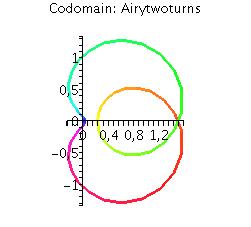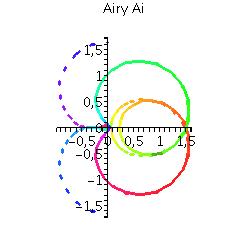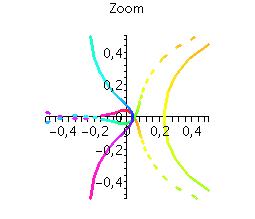


The DESIR Package
 |
 |
 |
The DESIR package contains commands in Maple that help you solve
linear ordinary differential equations in the neighborhood of singularities in the complex plane.
The first part consists in a new version of the DESIR-II package,
which was written in Maple V [1, 5]. Both versions are improved
forms of the DESIR-I package written in Reduce [2]. The purpose of
this part is the computation of formal solutions of homogenous
linear ordinary differential equations. In order to have access to
all information the formal solutions contain, the internal data
structure can be assigned to an optionally passed argument. The
Gevrey caracteristics (type and order) of the divergent series are
also stored in this data structure. Specific information can then
be extracted by using the primitive functions (irregpart,
regpart,param).
The second part collects some functions for the numerical
computation and the graphical visualization of the solutions in
the complex plane.
The principle of the representation is the following [6]: it
consists in plotting the image under the considered function f of
a circle or a circular arc around the singularity, in general 0
(or infinity). The color is used to associate a point in the
domain and its image: each point f(x) is plotted with a color
corresponding to the argument of x.
As the studied functions are in general multi-valued, we consider
them in the neighborhood of 0 as functions on the Riemann surface
of the logarithm and points in the domain are represented by their
Euler coordinates, whereas the image points are computed in
cartesian coordinates.
Computation of Stokes matrices
Code
The directory desir_2016
contains two maple files,
maple.mla and maple.help,
that you have to download in your own directory "mydirectory".
In a maple session, you have first to add this directory to the
global variable libname:
libname:="mydirectory",libname;
and then to load the package: with(Desir);
The command ?Desir will give you an overview of the package.
All the functions that are accessible to the user are
documented.
To run the package, you need: Maple at least 10.0
| Françoise JUNG Laboratoire Jean Kuntzmann 38401 Domaine universitaire de Saint Martin d'Hères, UGA, France. Francoise.Jung@imag.fr http://www-ljk.imag.fr/membres/Francoise.Jung |